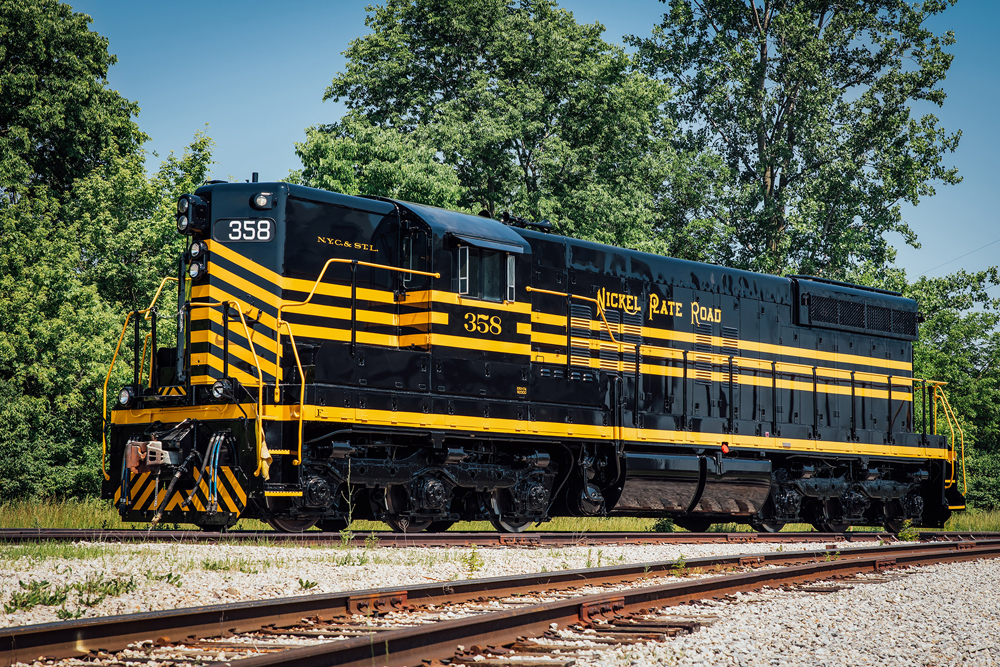
MUNCIE, Ind. — Nickle Plate Road SD9 No. 358 is nearing the end of a lengthy process of restoration to operation by the Fort Wayne Railroad Historical Society, with Progress Rail returning the locomotive to its appearance as built in 1957.
The locomotive, donated by Norfolk Southern to the Fort Wayne Railroad Historical Society in 2010, has been undergoing restoration for six years.
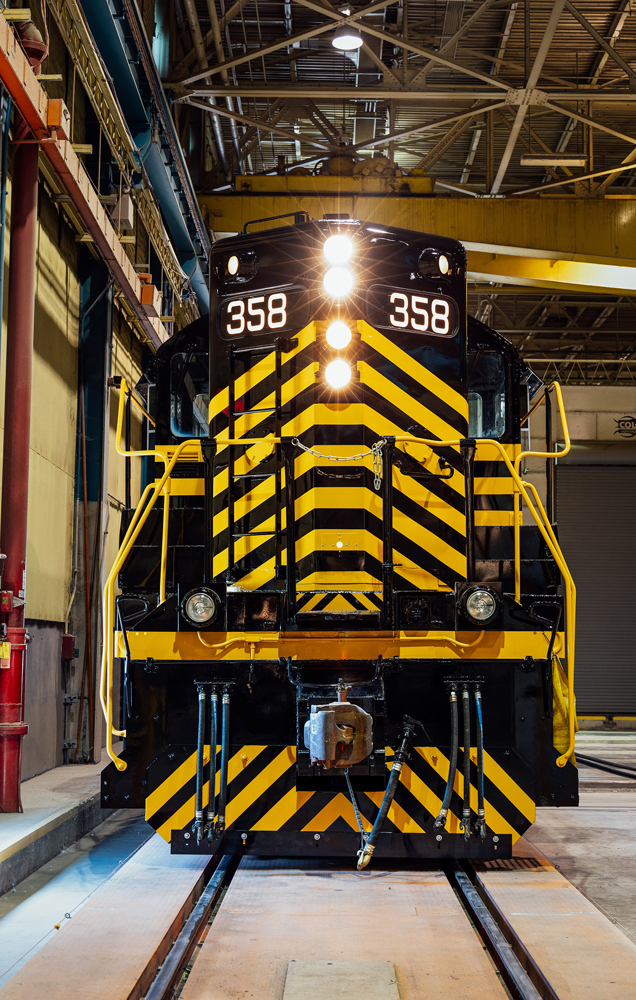
“It has been emotional for us to watch this machine transform from a derelict state to a museum-quality showpiece,” W.D. Miller, the society’s project manager, said in a press release. “Progress Rail’s support has been critical throughout the overhaul, and their commitment to making the locomotive look just as it did when it was built by Electro-Motive has our heartfelt gratitude. While our organization is known for operating a 1940s-era Nickel Plate steam locomotive, there is an entire generation of Americans who remember the enduring presence of these types of diesel-electric engines operating throughout the country.”
Progress Rail employees consulted original EMD diagrams in restoring the locomotives to the paint scheme it wore upon delivery.
“This project is a tribute to the design, durability, and quality of EMD locomotives,” said Art Erbacher, senior vice president of Progress Rail. “Supporting an effort like this is part of what makes working in the rail industry so rewarding.” Added Jose Ruy Sanchez, the company’s locomotive operations director in Muncie, “Being involved in this project has boosted morale within our team. We are excited to see the finalized unit and tell our family and friends we were part of the restoration.
More than 12,000 volunteer hours have been invested in No. 358’s restoration, along with more than $100,000 in financial and in-kind contributions. Along with Progress Rail and its employees, support has come from Steel Dynamics, Wheeling & Lake Erie Railway, Nickel Plate Railroad Historical & Technical Society, Crown Battery, Horizon Rail, and private individuals with locomotive expertise.
Upon its departure from Progress Rail, the 358 will be shipped to the Indiana Northeastern Railroad Co.’s locomotive shop in Hudson, Ind. Miller said electrical work remains but the project is “90% there.” Following completion, testing, and a break-in period, the locomotive will operate as part of the Indiana Rail Experience, at commemorative events, and for guest engineer programs, he said.
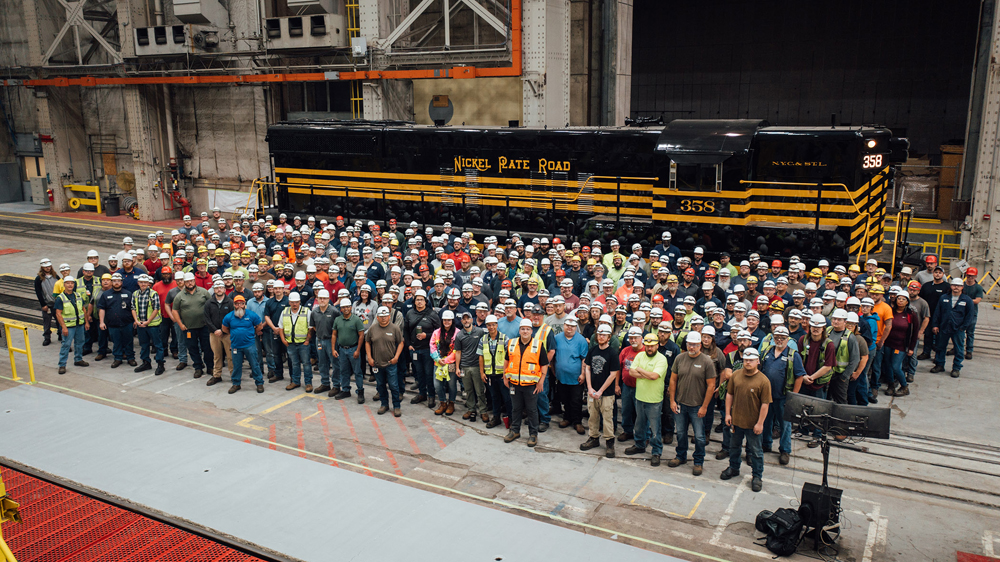






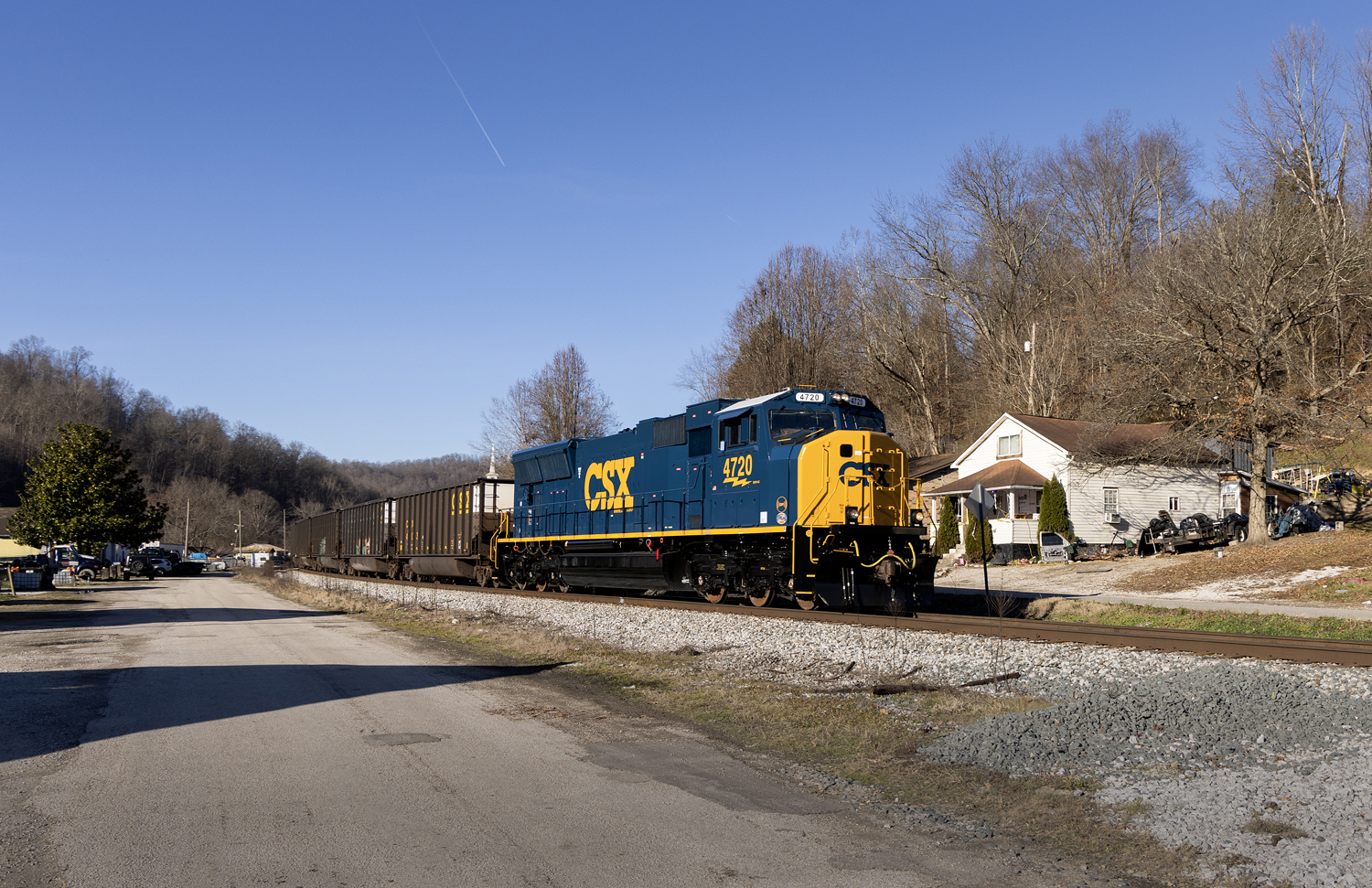
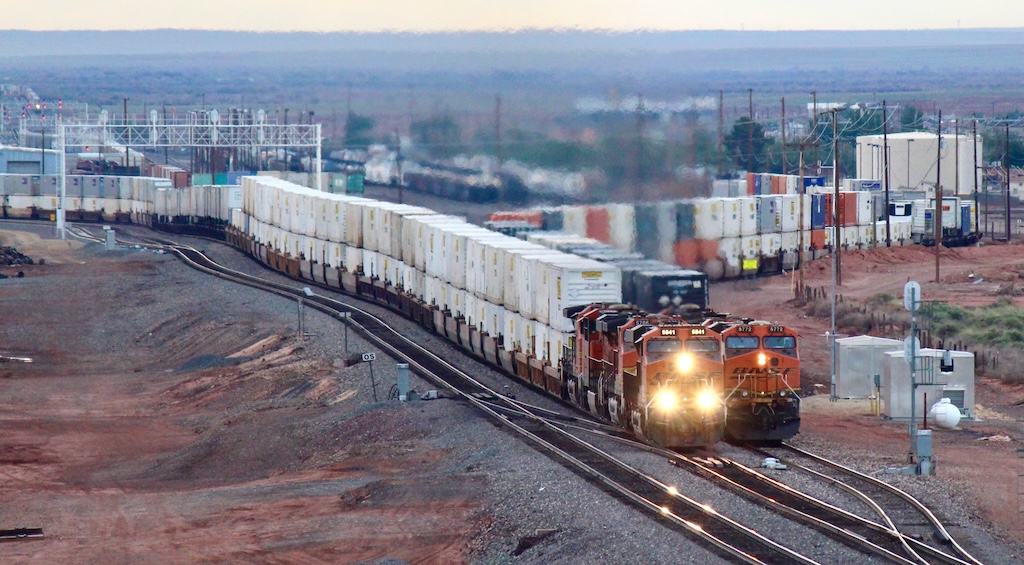
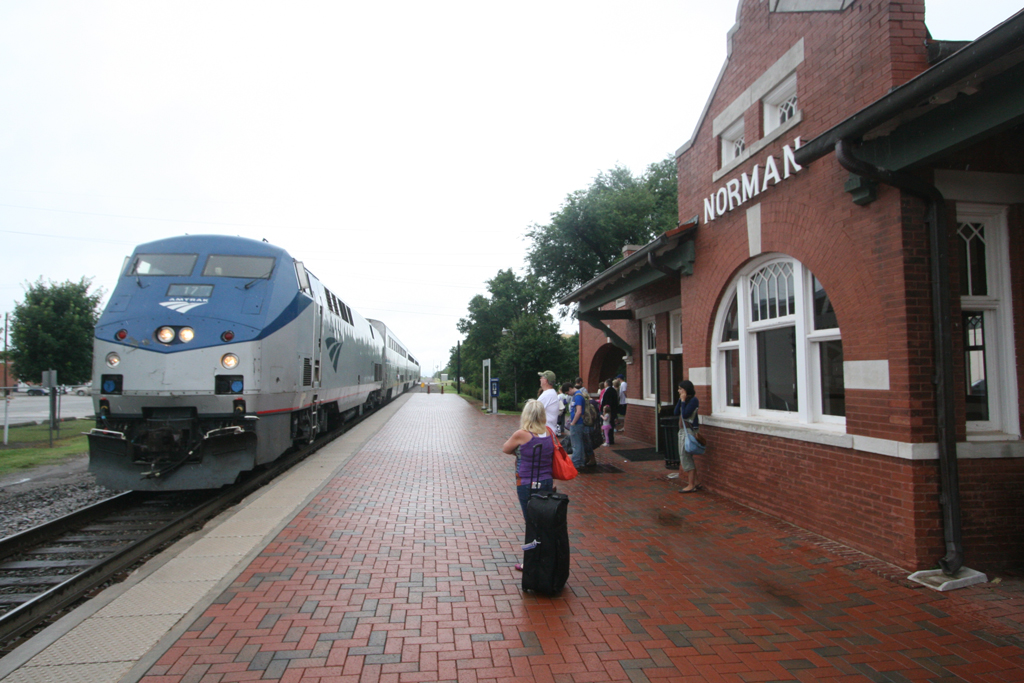
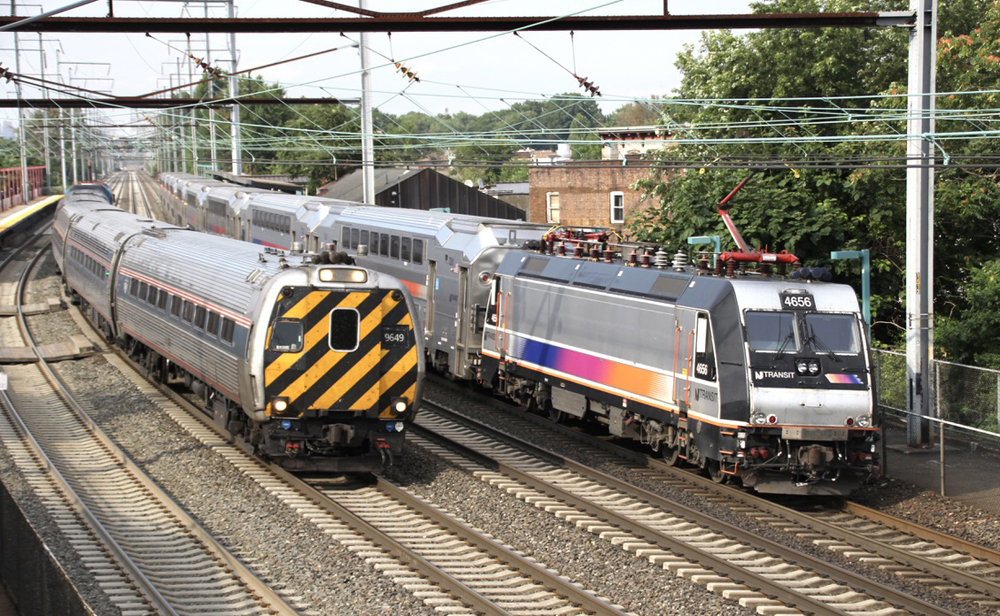




Donations to help complete the restoration of NKP EMD SD9 No. 358 can be made at “fortwaynerailroad.org/donate”.
Dr. Güntürk Üstün
Progress Rail Services Corporation (reporting mark PRLX), a fully owned subsidiary of Caterpillar since 2006, is a supplier of railroad and transit system products and services headquartered in Albertville, Alabama. Founded as a recycling company in 1982, Progress Rail has increased the number of its product and service offerings over time to become one of the largest integrated and diversified suppliers of railroad and transit system products and services in North America. Progress Rail markets products and services worldwide and maintains 110 facilities in the United States, 34 in Mexico, 4 in Canada, 2 in Brazil, 5 in UK, 1 in Italy, and 1 in Germany. Progress Rail is organized into two divisions: Infrastructure and Rolling Stock.
Dr. Güntürk Üstün
Named Indiana’s “Best New Experience” by the Indiana Tourism Association, the Indiana Rail Experience offers a variety of trips and events including hour-long rides, themed event trains, and all-day excursions aboard its historic passenger trains.
Dr. Güntürk Üstün
What a beautiful restoration job Progress Rail. I miss the uniqueness of multiple railroads. I use to custom paint N scale diesel locomotives. This definitely does not look like an easy paint job with all the stripes and angles.
At the turn of the 20th Century, Northeast Indiana was one of the most industrious regions in the Midwest. Connected by rail to every major city in the nation, it was also home to high-speed passenger trains and the revered steam locomotive. For many generations, railroading was a way of life. The Fort Wayne Railroad Historical Society, Inc. (FWRHS) honors this industrious history through its sensory experiences, passenger train excursions, and the operation of one of the last surviving steam locomotives in North America.
Dr. Güntürk Üstün
Nickel Plate Road EMD SD9 No. 349 is preserved at the Mad River & Nickel Plate Railroad Museum. It was retired as Norfolk Southern #52, and was donated to the museum in December 2010. It has been restored to its Norfolk & Western appearance.
Dr. Güntürk Üstün
The New York, Chicago and St. Louis Railroad (reporting mark NKP), abbreviated NYC&St.L, was a railroad that operated in the mid-central United States. Commonly referred to as the “Nickel Plate Road”, the railroad served parts of the states of New York, Pennsylvania, Ohio, Indiana, Illinois, and Missouri. Its primary connections occurred in Buffalo, Chicago, Cincinnati, Cleveland, Indianapolis, St. Louis, and Toledo.
The Nickel Plate Road was constructed in 1881 along the South Shore of the Great Lakes to connect Buffalo and Chicago, in competition with the Lake Shore and Michigan Southern Railway. At the end of 1960, NKP operated 2,170 miles (3,490 km) of road on 4,009 miles (6,452 km) of track, not including the 25 miles (40 km) of Lorain & West Virginia.
In 1964, the Nickel Plate Road and several other midwestern carriers were merged into the larger Norfolk and Western Railway (N&W). The goal of the N&W expansion was to form a more competitive and successful system serving 14 states and the Canadian province of Ontario on more than 7,000 miles (11,000 km) of railroad. In 1982, the profitable N&W was itself combined with the Southern Railway, another profitable carrier, to form Norfolk Southern Corporation (NS).
The NKP had 20 EMD SD9s in its fleet.
Dr. Güntürk Üstün
The EMD SD9 is a model of C-C diesel-electric locomotive built by General Motors Electro-Motive Division between January 1954 and June 1959. An EMD 567C 16-cylinder engine generated 1,750 horsepower (1.30 MW). Externally similar to its predecessor, the SD7, the SD9 was built with the improved and much more maintainable 567C engine.
471 SD9s were built for American railroads, while a further 44 were produced for export.
Many SD9s both high and short-hood can still be found in service today on shortline railroads and industrial operators. Although most Class 1 roads stopped using these locomotives by the 1970s and 1980s, some remain in rebuilt form on some major Class I railroads, as road switcher locomotives.
Dr. Güntürk Üstün
To be honest, the ingenious Progress Rail team created a progressive neo-classical work of art with the veteran Nickel Plate Road EMD SD9 No. 358!
Dr. Güntürk Üstün
Fort Wayne Historical Society has a nice 6-minute video featuring the restoration process and painting. Google it and you’ll find it.
The long lean lines of a classic SD-9. She’s a beauty…
Please correct photo caption.
Whats wrong with the caption?
The only thing that I can think of is perhaps she was setup to operate long hood forward, making the first caption technically incorrect (“A front view of SD9 No. 358 at the Progress Rail shops”).
That guess seems to have been wrong. NKP liked short hood forward operation and every picture I’ve found shows their SD9’s (and GP7’s and 9’s) leading in that orientation.
SD7’s were manufactured to operate long hood forward just like their Geep counterparts. Most railroads ran then short hood forward for better viewing of switching and general train operations. SD9’s were never manufactured to run long hood forward although some railroads, like Norfolk Western ran them and most of their locomotives that way until the FRA mandated that all trains be run that way with only a few exceptions….
this is such significant event for all involved. Thank you.